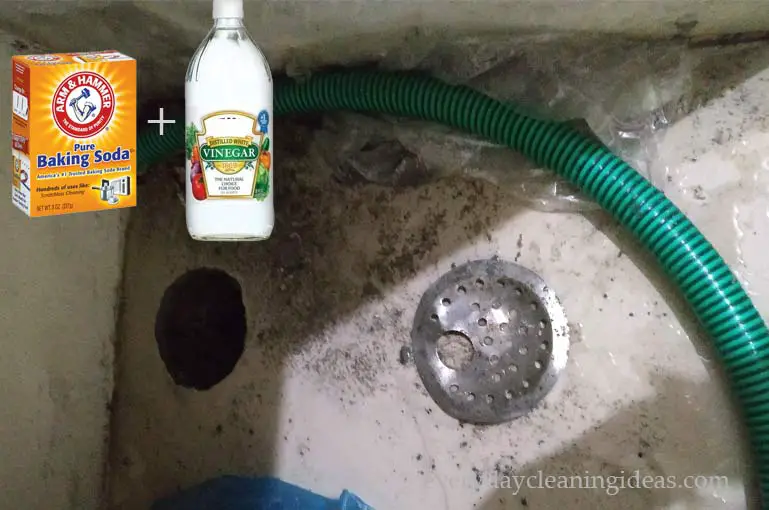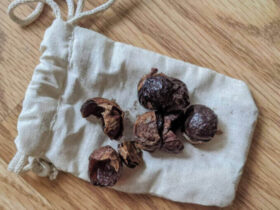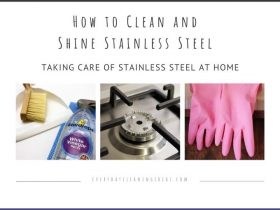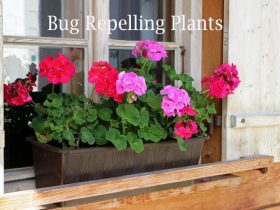31 December 2019. Worse night ever.
That’s because we woke to a blocked kitchen drain, and pretty much every utensil in my kitchen in need of cleaning.
Soggy sandwiches on the previous year’s newspaper – bad beginning to a new year, if you ask me.
The only relief is – that’s the last time I’m letting a clogged drain spoil my day. My artillery of unclogging tools is enviable, and the repertoire of my tips and tricks makes me the go-to person for all homemakers in my social circle.
In the next 10 minutes, you’ll read a distillation of all I know on this matter.
Blocked drains have the potential to bring your smooth functioning household to a standstill. They are one of the most essential but hidden parts of a house. You must clear out the blocked drain as soon as possible.
You do not need to reach out to the plumber just yet. There are various methods to clear out a clogged drain that you can do yourself. Let us discuss them in detail.
Some Handy Tools
It will be a wise decision to keep some tools ready. They often are the best bet in keeping your drains free of gunk.
- Plunger: This can be the first tool you would reach for when you find your drain pipe clogged with dirt. This is a real friend of a plumber too.
- Plumber’s snake: Also called a cable auger, this is a great tool. A hand crank on a spool has a long, steel cable of about 25-foot around it. A professional plumber may use one that is 100-foot long.
- Closet auger: Here’s the tool particularly used for toilet pipes. In place of a spool, it has a rigid shaft to snake out the gunk.
- Coat hanger: This is a DIY alternative to a plumber’s snake. Straighten out a wire coat hanger. Insert it into the pipes to pull out some debris. It is not as efficient but may work to some extent.
There is an electric power auger too. But, households do not need to store them. You can rent these in case of a very stubborn and large clog.
Now let us start with the general process for each drain.
Unclog Your Kitchen Drain
My journey to a blockage-free home started with my kitchen. So I will discuss this area first and in detail. It is a troublesome situation when you find a clogged kitchen sink drain. You must get on with the clearing process step-by-step.
Check the garbage disposer.
The garbage disposal system at the bottom of your sink is the most common source of a clogged sink. Clear that first. Unplug it to clear, if you hear a humming sound. Freeing the blades may do the trick. Or the motor may have tripped. Switch off, let cool and switch on again.
Next step is using the plunger.
If the disposer is not the problem, it is time to work the plunger. Fill the sink three-fourth with water. Close off the other drain from the double sink. Hold the plunger tightly over the mouth of the clogged drain. Push hard a few times.
Now, twist and pop out the plunger. Water should swirl into the drain. If not, plunge again. Remember not to plunge if using drain cleaning chemicals.
If plunging doesn’t help, clean the P-trap.
You may find that despite plunging the drain, kitchen sink remains clogged. If oil, grease and coffee grounds stick to the sides of the P-trap, water gets clogged there. Often, intensive plunging clears this. If that does not happen, open up the area.
Soak excess water away. Keep a bucket under the sink to catch water flowing out. Carefully turn open the slip-nut and disassemble the P-joint. Clean out all the gunk. Replace the parts if there are any cracks.
If not P-trap, clean the trap-arm.
Suppose after opening the P-trap, you find no clog. Then, remove the trap arm. There may be some gunk from sink drain lodged here. You have to clean away this debris.
If you find that the kitchen sink won’t drain, and not clogged either, then the problem is further inside.
Snake your drain using the plumber’s snake.
Loosen the setscrew at the end and pull a workable length of the cable. Tighten the set screw and feed the cable slowly into the drain. Loosen the end to pull out more cable. Continue to feed. You may feel the obstruction. Push through till the pressure loosens up. Now, crank counterclockwise to pull in the cable along with the gunk. Keep cleaning with towels and water.
Repeat the process a few times. Reassemble the drain parts and run warm water through the sink drain. This process is the best for any kitchen sewer clogged to the maximum.
Now you may add some drain cleaners to make the inside squeaky clean and fresh. Let us look at the best options for drain cleaners. There are some natural, safe household items. Some chemicals are also very effective. Just make sure that they will be safe for your family.
Common Household Items to Unclog Your Drain
My search for clog-free kitchen drain came up with some pretty simple solutions. When you find your kitchen sink or other outlet pipes clogged, you are tempted to pop some chemicals in and clean it away. Don’t jump to store-bought things right away. Start by trying out safe options using natural ingredients first. Here is a list of solutions that may be handy or in your kitchen cupboard.
- Boiling water: Here is the least expensive and most hassle-free option. This should be your first step. Boil a kettle full of water. Pour this boiling liquid in the drain and let stand. All water-soluble debris will loosen out. The heat will help further. You may need to repeat for better results.
- Dishwash detergent and boiling water: Mix a few spoons of dishwashing liquid with boiling water and pour down the drain. This is good for blocked grease. The heat loosens it and the detergent helps it wash away. This may take a few rounds.
- Salt with boiling water: Some homemakers swear by the process of using salt and boiling water to unclog drain. You must soak away standing water first. Pour a cup of table salt into the drain. Let sit. After a few minutes, pour boiling water to clear away the mixture.
- Salt and baking soda: One cup of baking soda mixed with half-a-cup of salt may work effectively. Pour it down the drain. Wait a few minutes for it to work. Run hot water to check if cleared.
- Vinegar and baking soda: Another simple drain cleaner off your kitchen shelf is a mix of baking soda and vinegar. As usual, clear away any standing water before you proceed. Pour about a cup full of baking powder into the drain. Pour an equal amount of vinegar. Let bubble. Cover with a stopper and wait for about 15 minutes. Pour hot water to clear. Repeat if needed.
- Salt, borax, and vinegar: Take one-fourth cup of salt and one-fourth cup of borax. Dump into the drain. Follow with half-a-cup of vinegar followed by a pot of boiling water. Let work for an hour. Clear with hot water.
Cleaning Clogs From Other Drains
It is not just the kitchen sink. Your other drains may get blocked too. Though the basic process will be the same for most, let us look into some additional information.
Bathroom sink/Bathtub drain
When your bathroom sink or bathtub drain gets clogged, you may want to clean it fast. Using safe kitchen products is not a priority here. You may want fast-acting drain cleaning chemicals from the store. Before you rush to the mart, try some products you have at home.
- Bleach: Does pouring bleach down the drain unclog it? Yes. You may not want to use this strong-smelling product in your kitchen. But bathrooms are places ideal for bleach. Measure out a cupful of bleach and dump it down your bathtub drain. Wait 15 minutes. Flush with hot water to clear the clog. Remember, bleach is a strong chemical and can corrode the material. So, don’t keep it for too long.
- Lye: This is another very corrosive agent. Carefully pour a few spoonfuls of the product down your drain and follow with a little water. Let sit for more than a half-hour. Pour boiling water. Keep away from your skin. Keep your face away while you work with lye and boiling water.
Toilet drain
When your toilet drain is stuck, it needs more careful cleaning. Though you may start with boiling water, vinegar, salt, etc. these won’t be very effective.
You may want to use a plunger. You need one with an extended rubber ring at the bottom. This provides a tighter seal and helps plunge better.
Use a closet auger. It is robust enough to reach the trap without bending too much. This will help you clear the gunk effectively.
You may want to use boiling water to help loosen up the clog before you start. You can finish by flushing with hot water too.
Bathroom drain
Another drain that often gets clogged easily is the shower drain. It quite often contains stray hair when you wash your hair. Bending over your shower drain with a heavy pot of boiling water may seem inadvisable. Also, you may not want chemical residue in and around the bathroom drain. Try one of the following methods.
- Dishwashing detergent
- Lye
- Baking soda and vinegar
- Bleach
- Safe drain opening chemicals
- Plunger
- Bent wire hanger
Careful use of these items and tools can clear your drain easily. Run hot water after you are done.
Floor drain
Very similar to the shower drain in your bathroom, this too needs careful manipulation. Your basement, garage, or laundry room has these to drain out your washing machines, water heaters, or carwash waste. They end up with sand, lint, and soap scum over time.
For this, you would need to rent a power auger. First, remove the strainer from the drain hole. Next, try and remove the plug to bypass the trap. But, if you can’t, you will have to go through the trap.
Now snake in the auger cable into the drain carefully and work it to pull out the gunk. Repeat back and forth to clear away the debris. Flush with hot water till the water runs free. Don’t forget to replace the clean-out plug to avoid sewer gas in the house.
Landscape drain/ outdoor drain
Make sure there are no tree roots growing around your pipes. These can crush and damage your pipelines.
If the drain is clogged near the upper end with twigs, dry leaves, and animal debris, pull these out with an auger. Then use your garden hose to clean the insides.
For similar clogs further into the pipe, consider using a sewer jetter. This is safe for PVC pipes, corrugated plastic pipes. Don’t use this for concrete and Orangeburg pipes. Wear proper protection before getting down to your job. Get professional help if you are not comfortable doing this yourself.
If you find your outdoor water drain clogged, try a blow bag before getting professional help. Attach this inflatable rubber bladder to the end of your garden hose. Insert the hose into the problematic pipe. Push as far as possible. Turn on the water. The bag fills with water and then bursts into a hydro jet. This forces out mild clogs from the pipe.
I have waged a war against clogged drain and won it successfully. My take-away is that some household items, some handy tools and taking action at the right time are very effective lessons. Also, take precautions to avoid clogging. Clean with safe ingredients at regular intervals to keep clogging at bay.









Leave a Reply
View Comments